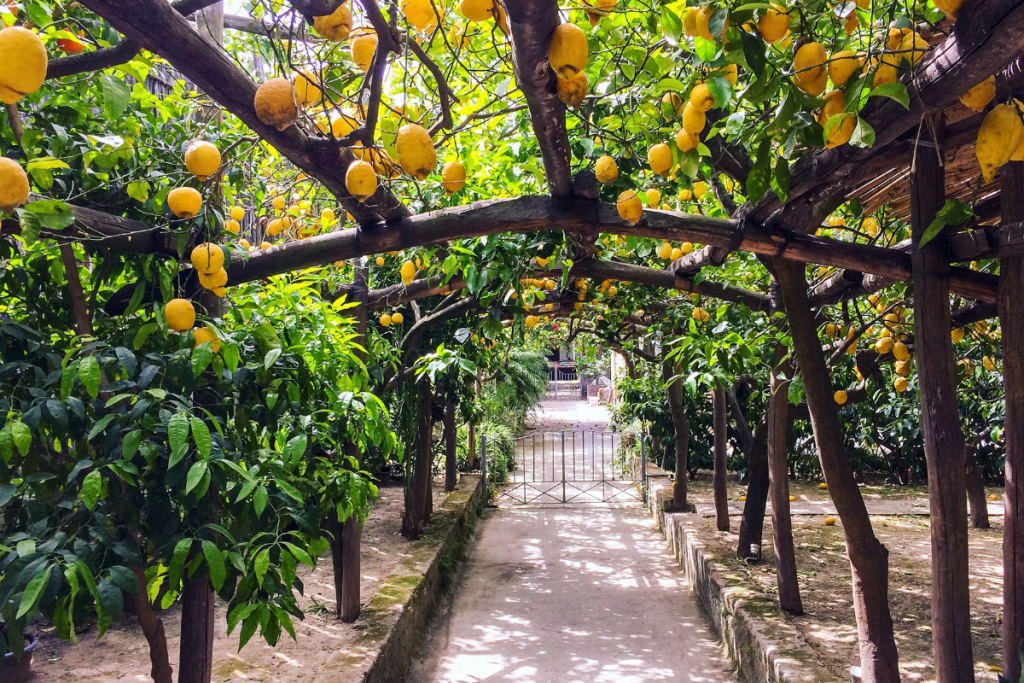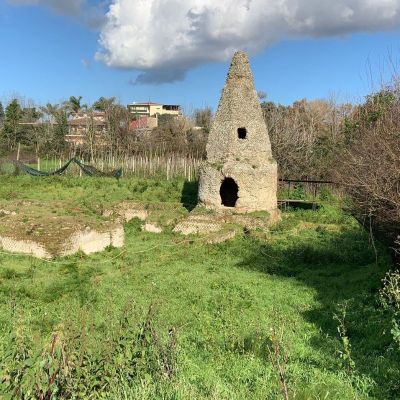In the picturesque town of Sorrento, along Italy’s Amalfi Coast, a golden elixir captures the essence of the region’s sun-kissed charm – Limoncello. This sweet, vibrant lemon liqueur has become synonymous with the Italian dolce vita and is a must-try for any traveler or tourist visiting Sorrento.
The History of Limoncello
Limoncello’s origins are steeped in tradition and folklore. While the exact birthplace of this liqueur is debated, with claims from Sorrento, Capri, and Amalfi, Sorrento has long been recognized for its deep-rooted connection to this lemony creation. The history of Limoncello in Sorrento dates back to the early 20th century. It was initially made in homes using locally grown lemons, a tradition that continues to this day. The recipe was often a closely guarded family secret, passed down through generations.

The lemons used in Sorrento’s Limoncello are the region’s pride. The Sorrento lemon, also known as ‘Ovale di Sorrento,’ is famed for its thick, fragrant skin, rich in essential oils, and its slightly sweet, tangy juice. These lemons are grown in terraced gardens along the Amalfi Coast, benefiting from the unique microclimate and fertile volcanic soil, which imparts them with a distinct flavor profile.
The Traditional Limoncello Recipe
The traditional recipe for Limoncello is simple yet requires precision. The primary ingredients are Sorrento lemon peels, pure alcohol, water, and sugar. The process begins by carefully peeling the lemons, ensuring no white pith is attached, as it can impart bitterness. These peels are then steeped in alcohol for several days to a few weeks, which extracts the natural oils and flavors. After this infusion period, a simple syrup of boiled water and sugar is prepared and mixed with the lemon-infused alcohol, resulting in Limoncello’s characteristic sweet, intense lemon flavor.
Limoncello Tours in Sorrento
For travelers and tourists, participating in a Limoncello tour in Sorrento is an immersive way to experience this local delicacy. These tours typically include a visit to a lemon grove, where guides explain the cultivation and harvesting process of Sorrento lemons. Visitors often get the opportunity to see the traditional Limoncello-making process, from lemon peeling to the final bottling.
One of the highlights of these tours is visiting the local limoncello factories and artisan workshops. Here, visitors can observe the meticulous process of Limoncello production and understand the importance of using high-quality, natural ingredients. These tours often end with a Limoncello tasting session, where visitors can sample various types of Limoncello and other lemon-based liqueurs.

The Limoncello Tasting Experience
A Limoncello tasting in Sorrento is not just about sipping a liqueur; it’s an exploration of a cultural symbol. The experience usually begins with an introduction to the different types of Limoncello available, including variations that incorporate other local citrus fruits like oranges or mandarins.
During a tasting, visitors learn to appreciate the color, aroma, and texture of Limoncello. The ideal way to enjoy Limoncello is chilled, not over ice, in small, chilled shot glasses. The first sip introduces a burst of lemony sweetness, followed by a warm, smooth finish. It’s often served after dinner as a digestive, known as a ‘digestivo’ in Italian dining tradition.
Pairing Limoncello with Food
In Sorrento, Limoncello is not only enjoyed as a standalone drink but also as a versatile culinary ingredient. It’s used in various desserts like sorbets, gelato, and cakes. Tiramisu al Limoncello, a lemony twist on the classic Italian dessert, is a must-try for any visitor.

Limoncello also pairs beautifully with savory dishes. It can be used in salad dressings, marinades for seafood, or simply drizzled over fresh mozzarella and tomatoes for a zesty touch.
Shopping for Limoncello
For travelers wishing to take home a taste of Sorrento, there are numerous shops and boutiques in Sorrento selling artisanal Limoncello. These range from beautifully bottled traditional Limoncello to innovative infusions and cream-based versions. When buying Limoncello, look for labels indicating ‘Limoncello di Sorrento PGI’ (Protected Geographical Indication), which guarantees authenticity and adherence to traditional methods.
Making Limoncello at Home
Many visitors are inspired to recreate the taste of Sorrento’s Limoncello back home. While Sorrento lemons might be hard to come by, the recipe can be adapted using locally available lemons. The key to making a good homemade Limoncello lies in using organic lemons, high-quality alcohol, and patience during the infusion process.
Sustainability and Future Trends
The production of Limoncello in Sorrento is not just about preserving a culinary tradition; it’s also about sustainability and supporting local agriculture. Many producers are adopting organic farming practices and focusing on sustainable packaging solutions. Looking to the future, there’s a growing interest in creating Limoncello with reduced sugar content and experimenting with new flavors, catering to the evolving tastes of modern consumers.
Conclusion
Limoncello, more than just a liqueur, is a symbol of Sorrento’s rich cultural heritage and the bounty of its land. For travelers and tourists, exploring the world of Limoncello offers a deeper connection to the traditions and flavors of the Amalfi Coast. Whether sipping it under the lemon groves, using it to enhance local dishes, or taking a bottle home, Limoncello is a zesty souvenir that embodies the essence of Sorrento.
Discover More
After delving into the zesty world of Sorrento’s Limoncello, continue exploring the region with “Discovering Sorrento: Things to Do in One Day.” This comprehensive guide offers insights into the best experiences and attractions in Sorrento, ensuring your visit is both memorable and enriching.





